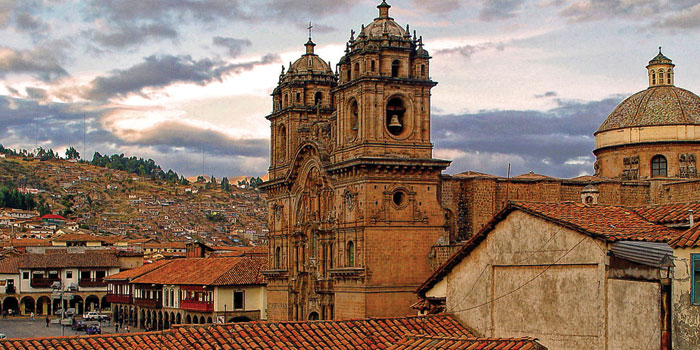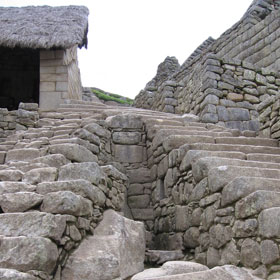Cusco & Machu Picchu
Located in the Peruvian Andes the beautiful city of Cusco is the Ancient capital of the Inca Empire. When the Spaniards conquered the Inca Empire in the 16th Century they preserved the basic structure of the Inca temples but built baroque churches and palaces directly on top of the Inca walls. After a major earthquake in 1950 that caused a lot of damage to the city’s buildings the old granite walls of the Coricancha (Temple of the Sun) as well as many other Inca walls throughout the city were exposed. Today you can walk the streets of the historical centre of Cuzco and the main square – the Plaza de Armas- and literally see layers of history. The surrounding countryside is also stunning, with ancient agricultural terraces and Inca ruins including Sacsayhuaman, Kenko, Puku Pukara, Tambo Machay, Pisac and Ollantaitambo and of course a train trip away – Machu Picchu!
Day 1
Arrive Cusco
Arrive in Cuzco, capital of the Inca Empire, where you will be met and transferred to your hotel. This afternoon relax and acclimatise to the altitude perhaps with a stroll around the ancient cobbled-stoned streets.
Day 2
Cusco
Morning at leisure. This afternoon enjoy a city tour, which includes the Cathedral on the Plaza de Armas, and the Koricancha Temple. Just outside Cusco, you will visit the ruins of Sacsayhuaman, Qenqo, Puka Pukara, and Tambomachay. B
Day 3
Cusco – Sacred Valley of the Incas
Today enjoy the Authentic Sacred Valley tour, starting with The Inca’s Balcony, a beautiful terrace with an impressive view of Chinchero, where twelves families still preserve their traditional costums, showing you the ancestral way in which they process the wool, and obtain those vivid colors for their textiles.. Continue to Ollantaytambo, one of the most monumental architectural complexes of the ancient Inca Empire, one of the few places where the Spanish conquistadors lost a major battle. Very well known for its “andenes” (terraces dug into the slopes of mountains for agricultural purposes), Ollantaytambo was a highly effective fortress, that also served as a temple. Explore the town of Ollantaytambo, “the unique living Inca town”: the best surviving example of Inca city planning, with narrow cobblestone streets that have been continuously inhabited since the 13th century. . Spend the night at a charming inn in the Sacred Valley. B L
Day 4
Sacred Valley of the Incas – Machu Picchu
Transfer to Ollanta station to board your train bound for Machu Picchu Village and take the shuttle bus up to Machu Picchu, a breathtaking Incan citadel. A guided tour of the ruins will have you wondering about the lives of the priests, craftsmen, and servants who inhabited this citadel and what drove them to build it on a mountain top. Excavations have revealed skeletons, artifacts and woolen clothing, but no gold. The same precise stonework as in other Incan sites in evident. Overlooking the raging Urubamba River and discovered in a hidden tangle of vines and trees atop the mountain, the city of Machu Picchu will forever hold the secret of its destruction as the Incas left no written record. Have lunch at the Sanctuary Lodge and then free time to wander the ruins. (note there is a time limit for your ruins visit. You will be advised. This afternoon take the shuttle bus back down to Aguas Calientes and your hotel. B L D
Day 5
Machu Picchu – Cusco
It is said that Machu Picchu is a place of great spirituality, and the ultimate spiritual moments of the day happens at sunrise. We suggest you rise early and return to the ruins which are usually shrouded in clouds before sunrise. Perhaps climb to the summit of Huayna Picchu or up to the Sun Gate for panoramic views. This afternoon take the train to Ollanta and transfer to your hotel in Cusco. B
(Bus and entrance fee on 2nd day is included, but if you would like to climb Huayna Picchu we will need to purchase an entrance fee on your behalf. Visits are limited so Please let us know at time of booking – approx. AU$ 25 additional)
Day 6
Depart Cusco
Transfer to the airport for your departing flight. B
Perhaps continue across the Altiplano to Puno, Lake Titicaca and Bolivia or into the jungle at Puerto Maldonado, or on to the white city of Arequipa.

Image at top page by Jeremiah Berman on Unsplash.
Tour Cost



